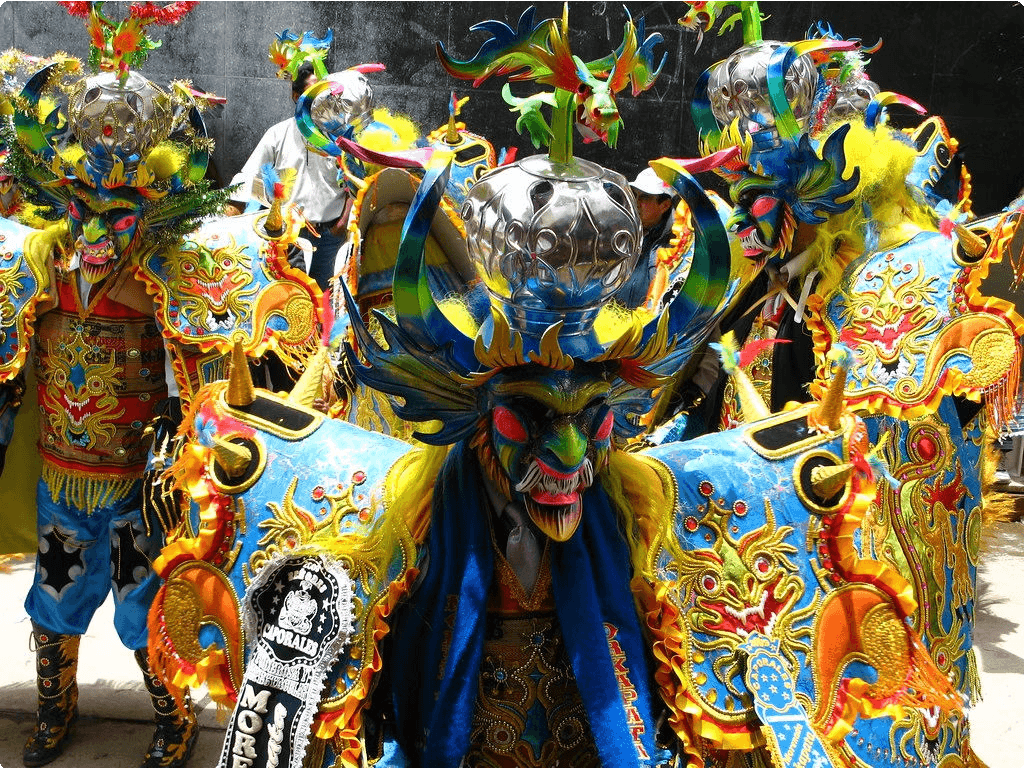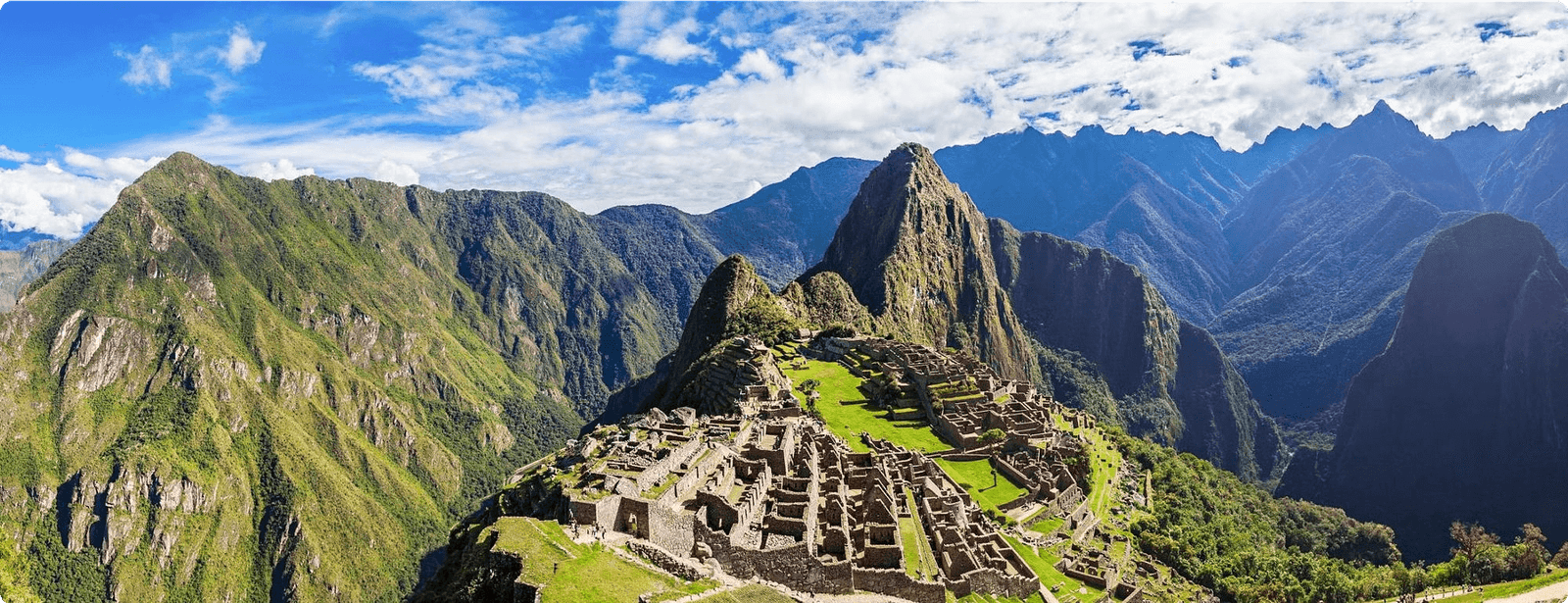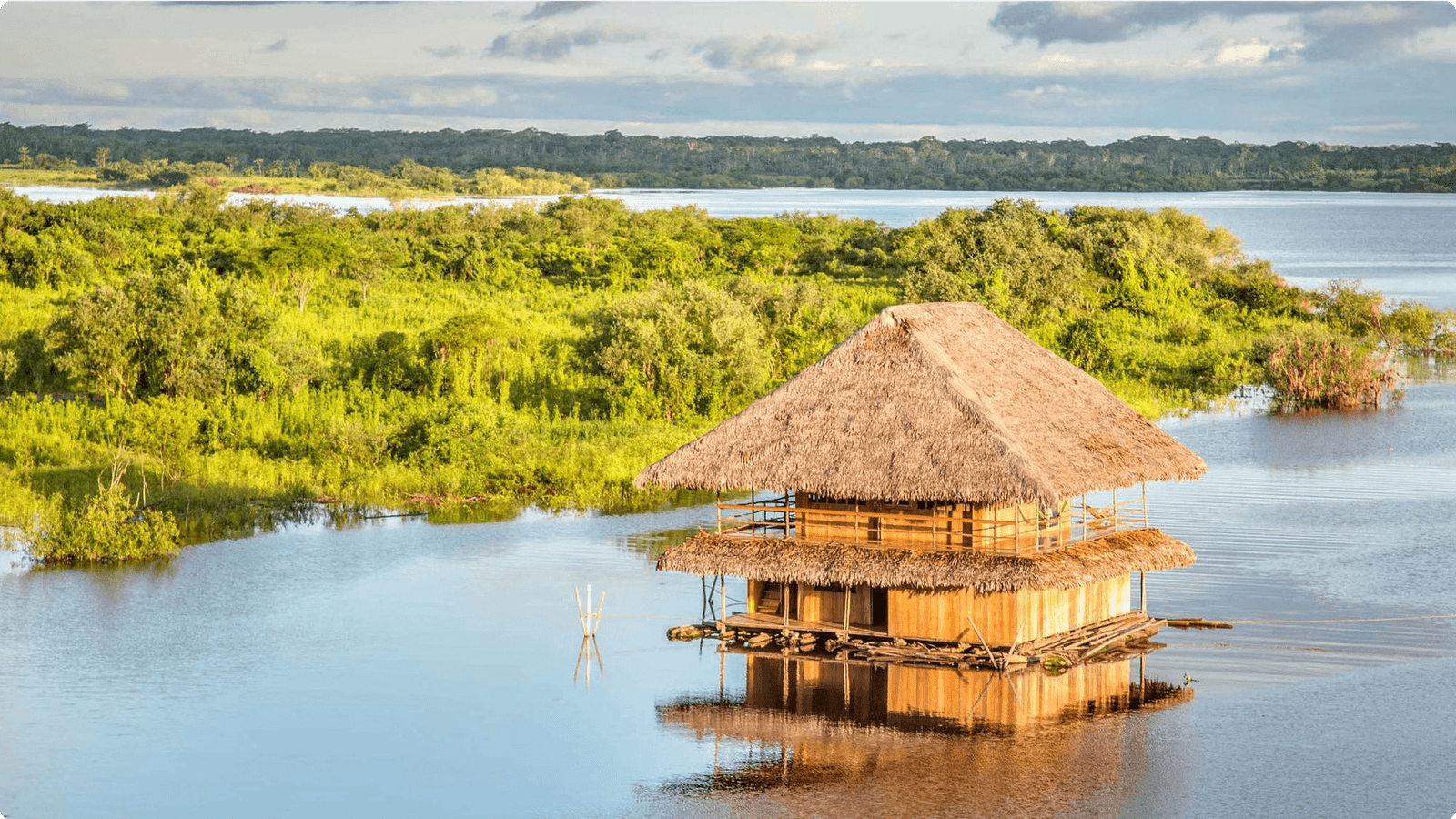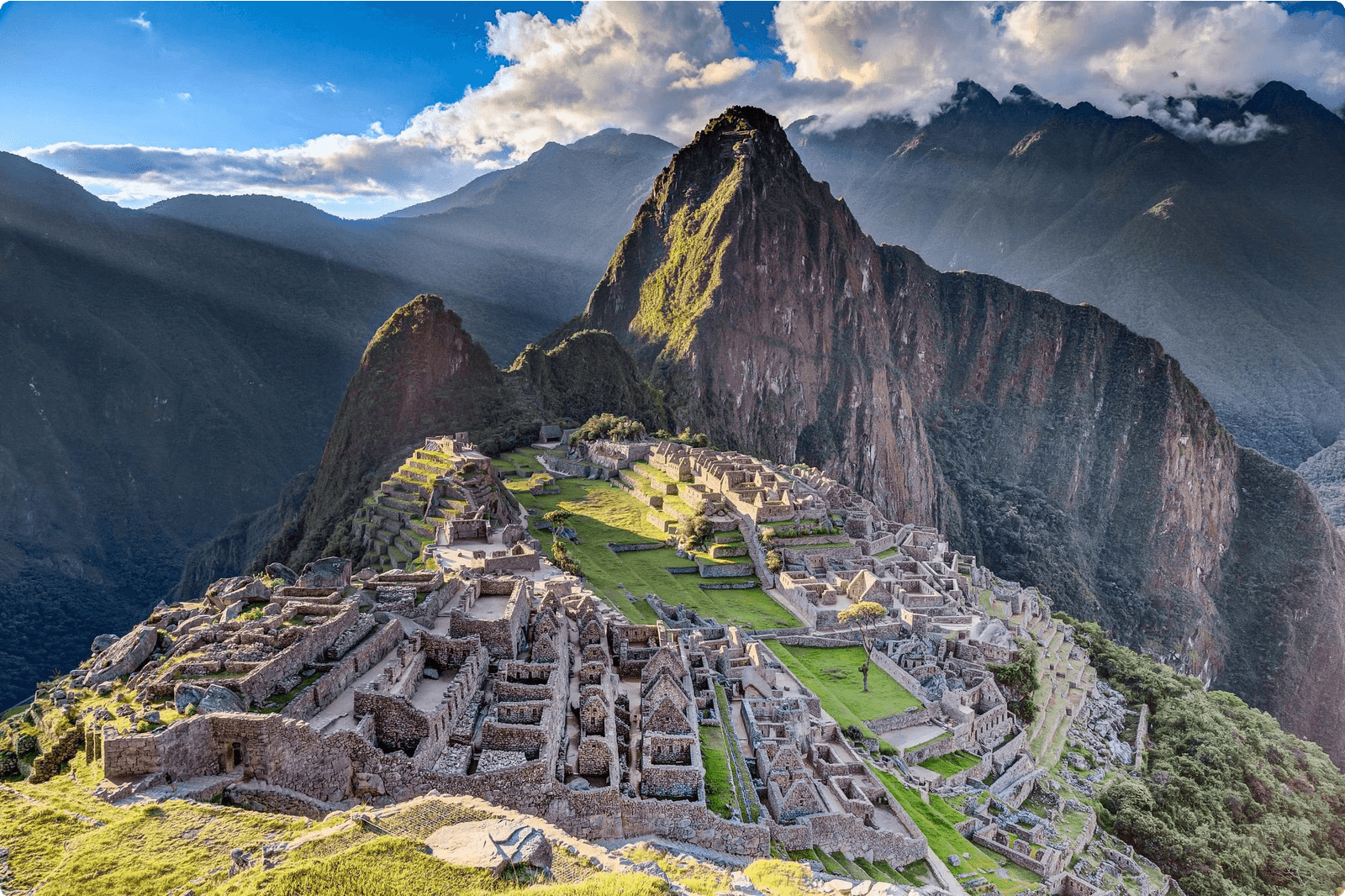Peru
Discover Peru
Peru, located in South America, is a country renowned for its rich history, vibrant culture, and diverse landscapes. From the majestic peaks of the Andes to the lush Amazon rainforest, Peru offers a unique blend of natural beauty and ancient traditions. The capital city of Lima is a bustling metropolis, while the ancient city of Cusco stands as a testament to the remarkable Incan civilization. With a dynamic culinary scene, traditional music and dance, and a fascinating fusion of indigenous and Spanish influences, Peru is a destination that captivates the hearts of travelers from around the world.
National Symbols: Flag and Coat of Arms
Peruvian Flag
The national flag of Peru consists of three vertical stripes: red, white, and red. The colors are said to symbolize the blood shed for the fight for independence, the peace and purity of the nation, and the bravery and generosity of the people, respectively. In the center of the white stripe, there is the national coat of arms, which represents the richness of the country.

Geography and Map
Peru, situated in western South America, is known for its diverse geography encompassing the Andes mountains, the Amazon Rainforest, and the Pacific coastline. The country boasts a rich tapestry of landscapes, from high-altitude plains to lush tropical forests.

The Andes mountain range dominates the Peruvian landscape, with peaks reaching over 6,000 meters in elevation. The Amazon Rainforest covers a significant portion of the eastern region, showcasing unparalleled biodiversity and vibrant ecosystems.
Peru’s location on the Pacific Ring of Fire makes it prone to seismic activity, resulting in unique natural formations such as deep canyons and rugged terrain. The detailed map of Peru illustrates the stunning topography and diverse ecosystems that make it a captivating destination for travelers and explorers.
Currency and Economy
Peruvian Nuevo Sol (PEN): The official currency of Peru is the Nuevo Sol. It is symbolized by the “S/.” and is further subdivided into 100 céntimos. The Nuevo Sol features banknotes and coins, with the notes depicting notable figures from Peruvian history and the coins featuring native flora and fauna.

Economic Overview: Peru has a rapidly growing economy, driven by industries such as mining, manufacturing, agriculture, and tourism. The country is known for its abundant natural resources, including copper, gold, silver, and zinc. Additionally, tourism contributes significantly to the Peruvian economy, with popular destinations attracting visitors from around the world.
Trade and Export: Peru has established itself as a major player in global trade, exporting a wide range of products including minerals, textiles, agricultural produce, and seafood. The country has trade agreements with numerous nations, further boosting its export market and economic stability.
Culture and Traditions
Peru is a country rich in cultural heritage and traditions, influenced by the indigenous Inca civilization and the Spanish colonial legacy. The diverse cultural tapestry of Peru is celebrated through vibrant festivals, stunning art, and traditional customs that have been passed down through generations.
The Peruvian people take great pride in their heritage, showcasing traditional clothing, music, and dance that vary by region. From the colorful and elaborate Quechua dress to the rhythmic marinera dance, each tradition reflects the unique history and identity of the Peruvian people.
Furthermore, the fusion of indigenous, African, and European influences has contributed to the delicious Peruvian cuisine, known for dishes like ceviche, lomo saltado, and aji de gallina. These culinary delights are an integral part of Peruvian culture, inviting visitors to savor the flavors of the country’s rich history.
Additionally, the renowned Inti Raymi festival, dedicated to the Inca sun god, and the mesmerizing traditional dance of the scissor dancers are just a few examples of the vibrant tapestry of culture and traditions that await visitors to Peru.
Famous Peruvian Dances
La Marinera
La Marinera is a traditional Peruvian dance that originated in the coastal regions of Peru. It is a graceful and romantic dance that simulates a courtship between a man and a woman. The dancers, adorned in vibrant and elegant costumes, showcase their intricate footwork and handkerchief movements, creating a mesmerizing performance that celebrates love and unity.

El Huayno
El Huayno is a lively dance and musical genre that is deeply rooted in the Andean culture of Peru. It is characterized by its upbeat tempo, accompanied by the sounds of traditional Andean instruments such as the charango and the quena. In this dance, performers display energetic footwork and vibrant attire, reflecting the joy and spirit of the Andean communities.

La Diablada
La Diablada is a captivating dance that is an important part of the cultural heritage of Puno, Peru. It is known for its elaborate costumes and masks, representing a blend of Andean and Spanish influences. The dance portrays a battle between the forces of good and evil and is often performed during religious and festive celebrations, showcasing the rich folklore and traditions of the region.

Peruvian Cuisine and Dishes
Peruvian cuisine is a delightful fusion of flavors, influenced by indigenous traditions, Spanish colonialism, African heritage, and immigrant populations. The diversity of Peru’s geography has also played a significant role in shaping its culinary landscape, offering a wide range of unique dishes and ingredients. One notable feature is the use of aji amarillo, a yellow chili pepper, which adds a distinct and vibrant flavor to many Peruvian dishes.

Ceviche, considered a national dish, is a refreshing and zesty preparation of raw fish cured in citrus juices and seasoned with onions, chili peppers, and herbs. Another iconic dish is Lomo Saltado, a delicious stir-fry combining marinated strips of beef, onions, tomatoes, and a hint of soy sauce, symbolizing the Chinese influence on Peruvian cuisine.

In addition to savory dishes, Peru boasts a rich array of desserts, such as the indulgent suspiro a la limeña, a velvety caramel-like custard topped with meringue. To complement these delectable dishes, Pisco, a grape-based brandy, is commonly enjoyed in traditional cocktails like the Pisco Sour.

Whether savoring fresh seafood by the coast, indulging in hearty stews in the Andean highlands, or delighting in innovative fusions in the bustling cities, the vibrant and diverse Peruvian cuisine is a culinary journey not to be missed for any food enthusiast.
Famous Peruvian Celebrities
Mario Vargas Llosa
Mario Vargas Llosa is a world-renowned Peruvian writer, journalist, and political activist. He is known for his impactful literary works including “The Time of the Hero,” “Conversation in The Cathedral,” and “The Feast of the Goat.” Vargas Llosa received the Nobel Prize in Literature in 2010 for his influential writing and commitment to defending freedom of expression.

Yma Sumac
Yma Sumac, a Peruvian soprano, was acclaimed for her remarkable vocal range and captivating performance style. Known as the “Peruvian Songbird,” Sumac gained international fame for her unique voice and stunning interpretations of traditional Andean music. Her albums, such as “Legend of the Sun Virgin” and “Voice of the Xtabay,” continue to inspire and influence musicians worldwide.

María Julia Mantilla
María Julia Mantilla is a Peruvian beauty queen, model, and actress. She was crowned Miss World in 2004, becoming the second Peruvian to win this prestigious title. Mantilla gained international recognition for her grace, intelligence, and commitment to various charitable causes.

Best Time to Visit Peru
Peru is a diverse country with a variety of climates depending on the region and the time of year. The best time to visit Peru largely depends on the type of experience you are seeking. The coastal areas, including Lima and Paracas, experience a mild climate most of the year, making them great destinations for beach and city activities.
If you are looking to explore the Andes and Machu Picchu, the dry season from May to October is the ideal time, as the weather is generally clear with less rain and humidity. This period provides comfortable temperatures and clear views of the breathtaking landscapes.
For those interested in the Amazon rainforest, the dry season from June to October offers drier conditions and better wildlife spotting opportunities. However, the rainy season from November to March can also be an exciting time to visit, with lush vegetation and the possibility of witnessing dramatic tropical storms.
If you are planning to visit Lake Titicaca and the southern highlands, the dry season is the best time to enjoy the stunning natural scenery and cultural experiences.
Top Tourist Attractions in Peru
Machu Picchu
Machu Picchu, a UNESCO World Heritage site, is one of the most iconic and breathtaking attractions in Peru. The ancient Incan city perched high in the Andes Mountains offers stunning panoramic views and a deep sense of history and mystery.
The Nazca Lines
The Nazca Lines, located in the Nazca Desert, are a series of ancient geoglyphs that form various shapes and figures, visible only from above. These intricate and enigmatic designs have intrigued archeologists and visitors for decades.

Lake Titicaca
Lake Titicaca, the highest navigable lake in the world, is renowned for its stunning beauty and unique floating reed islands. Visitors can immerse themselves in the culture of the indigenous Uros people and explore the serene surroundings.
Colca Canyon
Colca Canyon is a natural wonder famous for its breathtaking vistas and the opportunity to spot Andean condors in flight. The deep canyon, carved by the Colca River, offers incredible hiking opportunities and encounters with traditional villages.
Machu Picchu
Machu Picchu, often referred to as the “Lost City of the Incas”, is a UNESCO World Heritage site nestled high in the Andes Mountains of Peru. This magnificent archaeological site is shrouded in mystery and offers a captivating glimpse into the ancient civilization of the Incas. The iconic ruins, including the Temple of the Sun and the Intihuatana Stone, are set against a breathtaking backdrop of lush green peaks and dramatic cloud forests.

Visitors can hike the legendary Inca Trail, which culminates at Machu Picchu, and embark on a transformative journey through history and natural beauty. The significance of Machu Picchu extends beyond its architectural marvels, as it stands as a testament to the ingenuity and spiritual reverence of the Inca people.
Exploring Machu Picchu allows travelers to immerse themselves in the ancient allure of the Andes and discover the enigmatic legacy of the Inca Empire.
The Nazca Lines
The Nazca Lines are a series of ancient geoglyphs located in the Nazca Desert of southern Peru. These massive designs, etched into the desert floor, cover an expansive area and consist of hundreds of individual figures, ranging from simple lines to complex designs of animals, plants, and geometric shapes. The most famous figures include the hummingbird, monkey, spider, and the intriguing depiction of a large humanoid figure, known as the “Astronaut.” These enigmatic and immense etchings are believed to have been created between 500 BCE and 500 CE, serving as both artistic expressions and possibly having astronomical or religious significance. The precise methods used to create these immense designs still puzzle scientists and archaeologists, making the Nazca Lines an intriguing and mysterious archaeological wonder.

Lake Titicaca
Lake Titicaca, located on the border of Peru and Bolivia, is the largest lake in South America and the highest navigable body of water in the world. With its stunning panoramic views and cultural significance, it is a must-visit destination for travelers to Peru. The deep blue waters of Lake Titicaca are home to numerous unique islands, including the famous floating Uros Islands, where the indigenous Uru people live on artificial floating islands made of reeds.

Visitors can immerse themselves in the rich cultural heritage of the lake’s surroundings, explore traditional markets, and marvel at the awe-inspiring Andean landscapes. The breathtaking sunsets over Lake Titicaca, combined with the peaceful ambiance, create an unforgettable and mesmerizing experience for all who venture to this remarkable destination.
Colca Canyon
Colca Canyon is a stunning natural formation located in the Andes Mountains of southern Peru. Known as one of the deepest canyons in the world, it offers breathtaking panoramic views of the surrounding landscape, including terraced fields, traditional Andean villages, and the majestic Andean condors soaring through the skies.

The canyon is also home to the Colca River, which flows through the rugged terrain, creating a dramatic and picturesque setting. Visitors can embark on guided treks, marvel at the vibrant flora and fauna, and immerse themselves in the rich cultural heritage of the region, which is inhabited by indigenous communities.
The Amazon Rainforest
The Amazon Rainforest is the largest tropical rainforest in the world, boasting unparalleled biodiversity and natural beauty. Spanning multiple countries in South America, including Peru, it is home to countless species of flora and fauna, many of which are found nowhere else on Earth. The dense foliage, winding rivers, and diverse ecosystems make it a truly mesmerizing destination for nature enthusiasts and eco- tourists.

Visitors to the Amazon Rainforest can embark on guided tours to explore the lush jungle, observe exotic wildlife, and learn about indigenous cultures. Adventure seekers can also partake in activities like jungle treks, canopy walks, and river cruises, allowing them to fully immerse themselves in this extraordinary environment.
Lima, the Capital City
Lima, the capital and largest city of Peru, is a vibrant and bustling metropolis situated on the country’s arid Pacific coast. This beautiful city offers a unique blend of modernity and history, boasting a rich cultural heritage and a diverse culinary scene.

Explore the historic downtown area and immerse yourself in the enchanting colonial architecture, including the grand Plaza Mayor and the impressive Cathedral of Lima. Discover the vibrant districts of Miraflores and Barranco, known for their artistic ambiance, stunning coastal views, and lively nightlife.
Additionally, Lima is a culinary paradise, offering an array of delectable dishes that showcase the fusion of indigenous, European, African, and Asian influences. From ceviche to anticuchos, the flavors of Lima will captivate your palate.
Cusco, the Historic City
Cusco, located in southeastern Peru, was the historic capital of the Inca Empire and is now renowned for its well-preserved Spanish colonial architecture, including the impressive Inca ruins. The city is situated in the Andes mountains at an elevation of 3,399 meters (11,152 feet) and offers breathtaking panoramic views. Cusco’s rich history and cultural significance have earned it the designation as a UNESCO World Heritage Site.

Visitors to Cusco can explore the iconic Plaza de Armas, visit the sacred site of Qorikancha, and embark on a journey to the nearby Sacred Valley. The city serves as a gateway to the renowned Inca Trail leading to the awe-inspiring Machu Picchu, making it a must-visit destination for history enthusiasts and adventure seekers alike.
Arequipa, the White City
Arequipa, known as the “White City,” is a stunning location in southern Peru surrounded by three magnificent volcanoes. The city is famous for its exquisite colonial architecture, constructed from white volcanic stone known as sillar, which gives the city its unique white appearance.
Declared a UNESCO World Heritage Site, Arequipa boasts captivating churches, monasteries, and mansions, reflecting a rich blend of European and indigenous architectural styles. The iconic Santa Catalina Monastery, a city within a city, is a fascinating complex of convent buildings adorned with vibrant colors and intricate designs.

Arequipa is also renowned for its delicious cuisine, particularly the spicy pork dish, “adobo arequipeño,” and the scrumptious “rocoto relleno” – a stuffed spicy pepper. The city’s lively plazas, charming streets, and breathtaking scenery create a unique and memorable experience for visitors. Arequipa is an essential stop for those exploring the cultural and historical treasures of Peru.
Trujillo, the City of Eternal Spring
Trujillo, located on the northwestern coast of Peru, is often referred to as the “City of Eternal Spring” due to its year-round pleasant climate and beautiful natural surroundings. This charming city is steeped in history and is known for its colonial architecture, vibrant culture, and archaeological sites.

The city is also famous for its traditional celebrations, including the Marinera dance festival, which attracts performers and audiences from around the world. Trujillo’s cuisine is a delightful blend of flavors, featuring fresh seafood, traditional Peruvian dishes, and unique local delicacies.
Visitors to Trujillo can explore the nearby ancient ruins of Chan Chan, the largest pre-Columbian city in South America, and the Temple of the Sun and Moon, showcasing the legacy of the Moche civilization. With its rich history, lively culture, and stunning landscapes, Trujillo is a must-visit destination for any traveler exploring Peru.
Iquitos, the Gateway to the Amazon
Iquitos is the largest city in the Peruvian rainforest and serves as the main gateway to the Amazon River and the surrounding rainforest. Situated in the Amazon Basin, Iquitos is a unique and thriving city, accessible only by air or boat. It’s a bustling metropolis that offers visitors a fascinating blend of urban amenities and access to the unspoiled beauty of the Amazon jungle.

Visitors can explore the nearby Pacaya-Samiria National Reserve, home to diverse wildlife and indigenous communities. The city is also a center for traditional Amazonian medicine and shamanic practices, providing an opportunity to learn about the ancient healing traditions of the rainforest. With its vibrant market, lively waterfront, and unique cultural heritage, Iquitos offers an unparalleled experience for adventurous travelers seeking to immerse themselves in the heart of the Amazon.
Puno, the Folkloric Capital of Peru
Puno, a city located on the shores of Lake Titicaca, is famous for its vibrant cultural heritage and traditional folk music and dance. One of the most popular events in Puno is the Virgen de la Candelaria festival, a lively celebration filled with colorful costumes, music, and dance performances. The city’s streets come alive with the sound of traditional Andean music, featuring instruments like the quena, charango, and zampoña. Visitors can also experience the fascinating reed boat races, where locals showcase their skills in crafting and navigating totora reed boats.

Aside from its rich artistic traditions, Puno is also known for its intricate textiles and handicrafts, offering visitors the chance to admire and purchase beautifully crafted items. The city’s markets and artisanal shops are filled with intricately woven textiles, pottery, and handmade jewelry, providing a glimpse into the Andean culture and craftsmanship.
Huacachina, the Oasis in the Desert
Huacachina is a natural oasis located in the desert of southern Peru, just west of the city of Ica. The stunning oasis is formed around a small lagoon and is surrounded by towering sand dunes, creating a breathtakingly unique landscape.

The area is a popular spot for tourists and locals alike, offering activities such as sandboarding, dune buggies, and relaxing boat rides on the lagoon. The palm-lined shores of Huacachina, combined with the golden sand dunes, make it a picturesque and serene destination.
Mancora, the Beach Paradise
Mancora is a stunning beach paradise located on the northern coast of Peru. With its pristine white sandy beaches and crystal clear turquoise waters, it’s no wonder why Mancora is a favorite destination for beach lovers and surf enthusiasts.

The laid-back and relaxed atmosphere of Mancora is perfect for those seeking a peaceful escape. Visitors can indulge in various water activities such as surfing, snorkeling, and swimming, or simply unwind and soak up the sun on the beach. In addition to its natural beauty, Mancora also offers a vibrant nightlife scene, with beachfront bars and restaurants serving up delicious seafood and refreshing cocktails.
Whether it’s watching the breathtaking sunset over the Pacific Ocean or exploring the nearby hidden coves and natural pools, Mancora promises an unforgettable coastal experience for travelers seeking the ultimate beach getaway.
Huaraz, the Adventure Capital of Peru
Huaraz, located in the Andes mountain range, is known as the Adventure Capital of Peru. Offering a paradise for outdoor enthusiasts, this vibrant city is the gateway to a plethora of adrenaline-inducing activities. Surrounded by stunning mountain landscapes and dramatic peaks, Huaraz is a haven for trekking, mountaineering, and rock climbing. The nearby Huascarán National Park, home to the highest tropical mountain range in the world, provides countless opportunities for exploration and adventure.

Aside from its renowned hiking trails and mountain adventures, Huaraz also boasts exciting opportunities for activities such as paragliding, mountain biking, and white-water rafting. The Cordillera Blanca and Cordillera Huayhuash ranges offer breathtaking routes, crystal-clear lakes, and diverse ecosystems, making Huaraz a mecca for outdoor thrill-seekers.
Conclusion
Peru is a country filled with diverse landscapes, rich cultural heritage, and warm hospitality. Whether you are exploring the ancient ruins of Machu Picchu, cruising along the Amazon River, or savoring the flavors of Peruvian cuisine, the experiences in this vibrant country are truly unforgettable. With its fascinating history, captivating traditions, and breathtaking natural wonders, Peru offers something for every traveler. The memories made in Peru will stay with you long after your journey ends, leaving a lasting impression of this remarkable destination.

As a conclusion, Peru’s allure extends beyond its famous attractions, encompassing the warmth of its people, the rhythm of its dances, and the flavors of its cuisine. Whether you seek adventure, history, or simply a memorable vacation, Peru welcomes you with open arms and promises an experience that will exceed all expectations.